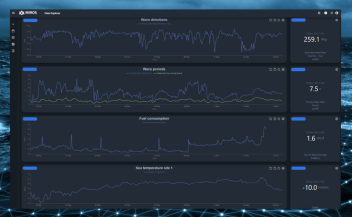Cool stuff and things - Real-Time Oil Spill Detection as a Service
In today’s digital landscape, the ability to access secure, real-time data is no longer a luxury—it’s a necessity. At the heart of this evolution is Miros, pioneering a shift in how we approach operational flexibility and data accessibility through an innovative as-a-service subscription model for oil spill detection and recovery.




In today’s digital landscape, the ability to access secure, real-time data is no longer a luxury—it’s a necessity. At the heart of this evolution is Miros, pioneering a shift in how we approach operational flexibility and data accessibility through an innovative as-a-service subscription model.
Our approach revolutionizes the way businesses acquire and leverage advanced monitoring equipment. Traditionally, companies have had to make significant upfront investments to access cutting-edge technology. With Miros’ as-a-service model, this is no longer the case. Businesses can now subscribe to our oil spill detection technology, gaining access to state-of-the-art equipment and data without the burdens of ownership, installation, maintenance, and upgrades. The financial strain of capital expenditure gives way to a flexible, pay-as-you-go system, allowing organizations to focus on their core operations while Miros handles the heavy lifting.
One of the standout features of our service is its real-time data-sharing capability. Our Oil Spill Detection (OSD) technology seamlessly integrates with Miros’ Cloud Service, allowing for instantaneous access to critical data. This is a game changer, especially for companies like Petrobras, which sought to enhance their oil spill detection infrastructure. By delivering a cloud-based, collaborative solution, we’ve demonstrated the power of real-time data in meeting stringent regulatory requirements and fostering operational synergy.
Early detection is key to minimizing environmental impact, and our model ensures that companies have access to timely, accurate data. The ability to securely share this data builds trust and improves decision-making, ensuring more effective responses to potential spills. Moreover, adhering to modern information security standards is crucial for maintaining data integrity throughout the detection and response process.
At Miros, we’ve gone a step further in oil spill detection by integrating advanced, physics-based image processing using X-band radar data, enhanced by infrared cameras for detection validation and spill volume estimation. Our ISO 27001-compliant systems ensure that from the point of detection to the onshore monitoring systems, data is handled with the highest security standards. The fusion of IoT technologies, cloud computing, and robust cybersecurity ensures secure and seamless data flow, enabling a more agile and responsive offshore operational framework.
Our research shows that secure, real-time data sharing dramatically reduces oil spill response times. Immediate alerts empower recovery teams to act swiftly, minimizing environmental damage and reducing operational delays. Reliable data further improves decision-making, cutting downtime, and boosting efficiency. Moreover, the reduction in redundant measurement systems lowers the overall environmental footprint of offshore activities, promoting greater transparency and trust with regulators.
This discussion highlights the transformative potential of combining remote sensing techniques with cutting-edge IT infrastructures. The integration of advanced cybersecurity, IoT, and cloud computing does more than improve sensor functionality—it paves the way for a more sustainable, transparent, and efficient offshore operations environment. These innovations set a new benchmark for optimizing oil spill detection and response efforts, with wide-ranging benefits for both operational efficiency and environmental responsibility.
In conclusion, Miros’ as-a-service model offers a forward-thinking solution that addresses both the financial and operational complexities of traditional equipment ownership. Our flexible, technology-driven model ensures superior oil spill detection while promoting environmental stewardship. As the offshore industry evolves, adopting innovative, data-driven approaches like ours will be critical to enhancing environmental protection and operational success.

